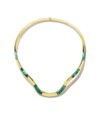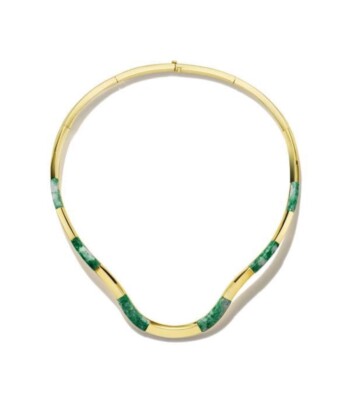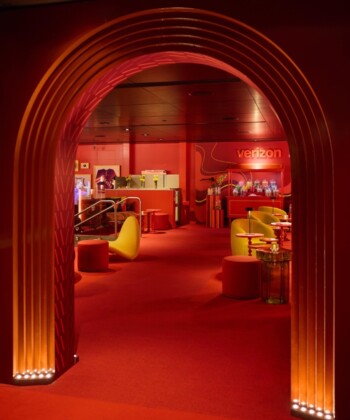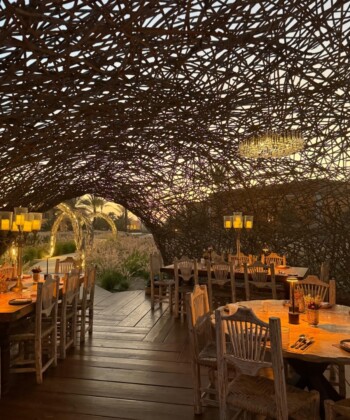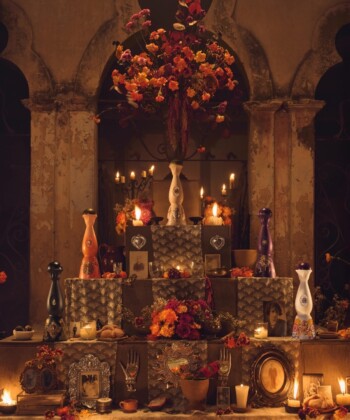“Thanks to Virgilio, and now thanks to Explora, we can show the world the research we’ve done,” local farmer Manuel Choqque enthuses in the Quechua language as the wind blows across sun-drenched cornfields.
I’m in the Andean highlands of Peru’s Chinchero District to view the staggering variety of native potatoes Choqque grows before observing how this and other local produce is cooked over fire, or baked in the earth of the windswept plateau.
Choqque has been working on recovering a miscellany of heritage potatoes for the past 15 years. He now cultivates more than 350 native varieties, which aren’t like any potato you’ll see at home—these tubers come in a multitude of shapes, all imbued with cultural significance and saturated with inky red, yellow, and purple pigments, which by good fortune are exceptionally rich in nutritional value. One is shaped like a puma’s paw; the chasca potato mirrors a star; and then there’s the “one that made your daughter-in-law cry,” which takes its name from the tradition dictating that a wife-to-be must immediately peel the potato given to her by her future mother-in-law in order to prove she’s ready for marriage.
This deep-rooted cultural connection is typical of the parallels drawn between the diversity of produce and fertility of the land and the area’s rich heritage and Incan-informed identity.

Explora’s Sacred Valley eco-lodge
For Peruvian chef Virgilio Martínez, this journey began in 2013, when he established the Mater Iniciativa with a team of researchers. Together, the multidisciplinary group endeavors to seek out unknown ingredients from across Peru. This native produce is then showcased on the creative menus of Martínez’s Lima-based restaurant Central (currently number six on the Eater.com World’s 50 Best Restaurants list), highlighting the range of ecosystems and elevations across the nation.
Martínez has worked closely with Choqque since embarking on this ambitious venture, and now Explora is coming aboard to connect more people with the land. This partnership gives guests of Explora’s Sacred Valley eco-lodge the chance to experience the territory through excursions, local ingredients, and Incan cooking. And with travel companies like Latin Routes integrating explorations into their Peru itineraries, these culinary connections have never been more accessible.

The view from the dining room
The modern lodge’s high-ceilinged, wood-beamed restaurant now features menus created by the illustrious chef, and several excursions are being developed to shine a light on the local gastronomy. Martínez will even make appearances several times a year to host the immersive experiences.
Martínez introduces this partnership and Explora’s new culinary concept at a cocktail reception in the open-air courtyard of the lodge’s colonial spa house amid the smell of wood smoke and the crackle of an open fire.

A suite in the eco-lodge
“Since day one, we had a feeling we were doing something amazing,” he begins. “This is about the food we see here in the Sacred Valley. It’s about the ingredients we get from Andean producers we have known for years. None of the produce will have traveled far. You can’t re-create this food in Lima. You need to have it here. By sharing what’s happening in the Sacred Valley, Explora is highlighting a food culture that’s usually invisible.”
The lodge will focus on the same local ingredients as Martínez’s nearby restaurant Mil, which launched last year, but the menus here are designed for day-to-day dining—you can expect dinner at Mil to last three to four hours.
“We are just using a different format,” Martínez explains. “It’s a different way to experience the food.”

A selection of Martínez’s dishes
The seven-course tasting menu we dine on that night incorporates dishes of cured trout, avocado, and potatoes from the town of Huanta; duck ceviche with black quinoa and the Andean lupine tarwi; and chapla, a regional bread made from purple and piscorontu corn, with rib steak and the Peruvian herb sauce huacatay. Lima beans and “mushrooms of extreme heights” come with the black beaded algae cushuro, followed by the heartiest dish of the night, a tender cut of pork neck with honey and chilies, accompanied by side dishes of purple potatoes and petal-strewn tubers and roots.
The meal comes to a close with fruits from the surrounding land with huacatay ice and a dessert dubbed Cacao Quillabamba, an indulgent combination of chocolate textures from the cacao-producing town for which it’s named. Each course comes plated on artisanal Peruvian ceramics and is paired with wines from vineyards such as Doña Ana and Viña Casa Marin, in Peru and Chile.
The following morning, we depart for the archaeological site Moray, which, located at around 11,000 feet, is believed to have been an agricultural laboratory used by the Incas to experiment with crops in different microclimates.
It’s from these ruins that we continue on to the potato fields of the renowned farmer who stands among the local food heroes to whom this new partnership pays homage.
Travel to Explora Sacred Valley on the Luxury Peru and Chile itinerary with Latin Routes.





